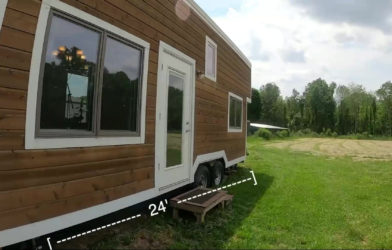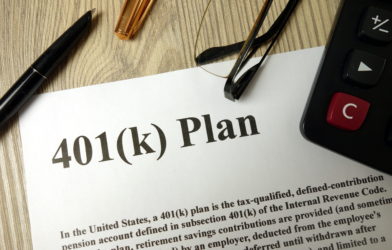The current mortgage rates are scaring many people away from buying a new home. As of August 2022, rates for a 30-year fixed mortgage by the federal housing administration have increased to about 5.5%. This means the closing costs for houses will be a lot higher now than they were a year ago.
However, don’t let these interest rates scare you if you’re determined to buy a house. Just because 3% rates are a thing of the past doesn’t mean you can’t buy your dream home. In fact, interest rates are still historically low, and now is an excellent time to buy a house if you’re ready.
Current vs. past mortgage rates
Taking a mortgage loan with a high interest rate is not ideal, but it’s still manageable. Getting a fixed-rate mortgage instead of a variable rate mortgage may be a good idea, so you’re not worried about interest rates going up in the future and making your payments more expensive.
It’s important to remember that even if mortgage rates go up, they’re still relatively low in historical terms. The average 30-year mortgage interest rate in 1981 was 16.63%, while in 2000, it was 8.05%. Today’s mortgage rates at 5.99% may be high compared to a few years ago, but they’re still relatively low historically.
Still, if your monthly gross income can only afford a mortgage payment at 3%, it’s best to wait until rates go down before buying a house. Alternately, you might want to pay a larger down payment to balance the higher interest costs or purchase a less expensive home to give yourself some wiggle room in your budget when it comes to your monthly payments.
Buying a house vs. renting
The difference between median monthly rents and median monthly mortgage payments in the United States has narrowed to barely $30, the smallest margin on record, making it difficult to decide whether to buy or rent. This is making it more challenging for home buyers to arrive at a decision of whether to buy or rent.
One of the main things you should consider is how much home you can afford. Your down payment, mortgage rate, homeowners’ insurance, and mortgage insurance will largely dictate how much you’ll pay for your property.
Additionally, take a look at the housing market and see whether it is a buyer’s or seller’s market. In the past few years, real estate demand has been high, making the market more lucrative for sellers and more expensive for buyers.
A higher mortgage rate means you’ll be paying more in interest over the life of your loan. The average 30-year mortgage rate increase may become a dealbreaker for some. However, buying a house makes more sense if you’re looking at a longer timeline. You’ll build up equity in the home as you make your mortgage payments, which you don’t get by making monthly rent payments.
How much house can you afford?
Even if you’re earning a good income, it’s important not to overstretch yourself when buying a house. To calculate how much house you can afford, start by looking at your income and debt.
You can use an online mortgage calculator to get an estimate of your monthly mortgage payment. Then you can look at the 28/36 rule and calculate your debt-to-income ratio to see how expensive of a house you can afford.
The 28/36 rule is a guideline that lenders use to determine how much you can afford to spend on a house. This rule stipulates that your monthly mortgage payment (including taxes and insurance) should not exceed 28% of your gross income.
The amount of debt you have divided by your monthly income is your debt-to-income ratio. Lenders use this to determine how much they will lend you for a mortgage. A high debt-to-income ratio means you might have a more challenging time making your monthly mortgage payments.
According to the 28/36 rule, your debt should not be more than 36% of your gross monthly earnings. Add up all your other debts (such as credit card payments, car loans, student loans, etc.) and make sure that the total is not more than 36% of your gross income.
9 steps to buying a house
If you’re set on buying a house, follow these steps to make the process as smooth as possible.
1. Choose the right type of mortgage for you
There are many types of mortgages available, each with pros and cons. You’ll need to decide if you want a variable rate or fixed rate mortgage, as well as how long you want the mortgage term to be (common terms are 15 and 30 years).
2. Get a mortgage preapproval
As a home buyer, get a mortgage pre-approval to have an idea of what interest rate you’ll be paying based on your credit score. It will also show sellers that you’re a serious buyer. A mortgage broker can help you through this process.
3. Find a real estate agent
Finding a real estate agent is necessary to have a successful home-buying experience. Real estate agents will be your guide throughout the entire home buying process and assist you in locating the ideal residence for you and your family. The good news is that the seller typically pays the real estate agent for their time and effort.
4. Go house hunting
This is the fun part! You’ll get to start looking at houses and see which ones you like. Keep in mind your budget and what you’re looking for in a home when you’re house hunting. You can also consult your family members and real estate agent for their opinion.
5. Make an offer
Based on the market conditions and the valuation of the property, your real estate agent will assist you in creating a fair and reasonable offer. You may need to make multiple offers if you are buying in a highly competitive market, so stick with it and you will eventually buy a house.
6. Get a home inspection
A home inspection is a must before you decide to buy a house. This will help ensure that the home is in good condition and all the repairs are done. Plus, from a financial perspective, getting a home inspection can help you negotiate the purchase price.
7. Get a home appraisal
A home appraisal is essential to ensure you’re not overpaying for the home. The appraised home value may be lower than the asking price, which will give you some negotiating power regarding the purchase price. When purchasing a house, the buyer usually pays appraisal fees.
8. Do a final walkthrough
A final walkthrough is done a day or two before the closing date. This is to ensure that the new house is in the same condition as when you first saw it and that all agreed-upon repairs have been made.
9. Close on your new home
Closing on your new house means that the sale is finalized. This is usually done with a lawyer or notary present. Once the documents have been signed, you will be the new owner of the house, and your home-buying journey will come to an end.
Key takeaways
Despite higher mortgage rates, there are still plenty of reasons to buy a house. Just remember to do your research and take your time before making such a large purchase.
If you’re ready to buy a house, consider how much you can afford to pay and what type of mortgage would work best for you. Keep in mind that even if mortgage rates go up, they’re still relatively low in historical terms.









